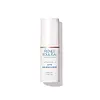What's inside
What's inside
 Key Ingredients
Key Ingredients

 Benefits
Benefits

 Concerns
Concerns

 Ingredients Side-by-side
Ingredients Side-by-side

Water
Skin ConditioningCaprylyl Methicone
Skin ConditioningTrioctyldodecyl Citrate
EmollientMethyl Gluceth-20
HumectantPEG-12 Dimethicone/PPG-20 Crosspolymer
CI 77163
Cosmetic ColorantDipotassium Glycyrrhizate
HumectantPalmitoyl Tetrapeptide-7
Skin ConditioningTetrahexyldecyl Ascorbate
AntioxidantPalmitoyl Tripeptide-1
Skin ConditioningSodium Hyaluronate
HumectantN-Hydroxysuccinimide
Skin ConditioningChrysin
Skin ConditioningTocopherol
AntioxidantAscorbyl Palmitate
AntioxidantAscorbic Acid
AntioxidantCitric Acid
BufferingGlycerin
HumectantSqualane
EmollientPhenyl Trimethicone
Skin ConditioningPentylene Glycol
Skin ConditioningDimethicone
EmollientAmmonium Acryloyldimethyltaurate/Vp Copolymer
Laureth-4
EmulsifyingPolysorbate 80
EmulsifyingHydroxyethyl Acrylate/Sodium Acryloyldimethyl Taurate Copolymer
Emulsion StabilisingCetyl Esters
EmollientSteareth-20
CleansingPolysorbate 60
EmulsifyingPEG-8
HumectantGlucose
HumectantEthylhexylglycerin
Skin ConditioningLactoperoxidase
StabilisingGlucose Oxidase
StabilisingRosa Damascena Flower Oil
MaskingWater, Caprylyl Methicone, Trioctyldodecyl Citrate, Methyl Gluceth-20, PEG-12 Dimethicone/PPG-20 Crosspolymer, CI 77163, Dipotassium Glycyrrhizate, Palmitoyl Tetrapeptide-7, Tetrahexyldecyl Ascorbate, Palmitoyl Tripeptide-1, Sodium Hyaluronate, N-Hydroxysuccinimide, Chrysin, Tocopherol, Ascorbyl Palmitate, Ascorbic Acid, Citric Acid, Glycerin, Squalane, Phenyl Trimethicone, Pentylene Glycol, Dimethicone, Ammonium Acryloyldimethyltaurate/Vp Copolymer, Laureth-4, Polysorbate 80, Hydroxyethyl Acrylate/Sodium Acryloyldimethyl Taurate Copolymer, Cetyl Esters, Steareth-20, Polysorbate 60, PEG-8, Glucose, Ethylhexylglycerin, Lactoperoxidase, Glucose Oxidase, Rosa Damascena Flower Oil
Water
Skin ConditioningButylene Glycol
HumectantDipropylene Glycol
HumectantGlycerin
HumectantPanax Ginseng Root Extract
EmollientCoffea Arabica Seed Extract
MaskingSodium Ascorbyl Phosphate
AntioxidantNiacinamide
SmoothingCitric Acid
BufferingTocopheryl Acetate
AntioxidantPolysorbate 20
EmulsifyingAcrylates/C10-30 Alkyl Acrylate Crosspolymer
Emulsion StabilisingPhenoxyethanol
PreservativeSodium Hydroxide
BufferingAmmonium Acryloyldimethyltaurate/Vp Copolymer
Propylene Glycol
Humectant1,2-Hexanediol
Skin ConditioningTrisodium Ethylenediamine Disuccinate
Potassium Sorbate
PreservativeSodium Benzoate
MaskingWater, Butylene Glycol, Dipropylene Glycol, Glycerin, Panax Ginseng Root Extract, Coffea Arabica Seed Extract, Sodium Ascorbyl Phosphate, Niacinamide, Citric Acid, Tocopheryl Acetate, Polysorbate 20, Acrylates/C10-30 Alkyl Acrylate Crosspolymer, Phenoxyethanol, Sodium Hydroxide, Ammonium Acryloyldimethyltaurate/Vp Copolymer, Propylene Glycol, 1,2-Hexanediol, Trisodium Ethylenediamine Disuccinate, Potassium Sorbate, Sodium Benzoate
 Reviews
Reviews

Ingredients Explained
These ingredients are found in both products.
Ingredients higher up in an ingredient list are typically present in a larger amount.
Ammonium Acryloyldimethyltaurate/Vp Copolymer (let's call it AAVC for short) is a synthetically created polymer. It's used as a film-forming agent and used to thicken the consistency of products.
AAVC is able to increase the consistency and viscosity of products due to its large molecule size. It also prevents ingredients from separating.
Citric Acid is an alpha hydroxy acid (AHA) naturally found in citrus fruits like oranges, lemons, and limes.
Like other AHAs, citric acid can exfoliate skin by breaking down the bonds that hold dead skin cells together. This helps reveal smoother and brighter skin underneath.
However, this exfoliating effect only happens at high concentrations (20%) which can be hard to find in cosmetic products.
Due to this, citric acid is usually included in small amounts as a pH adjuster. This helps keep products slightly more acidic and compatible with skin's natural pH.
In skincare formulas, citric acid can:
While it can provide some skin benefits, research shows lactic acid and glycolic acid are generally more effective and less irritating exfoliants.
Most citric acid used in skincare today is made by fermenting sugars (usually from molasses). This synthetic version is identical to the natural citrus form but easier to stabilize and use in formulations.
Read more about some other popular AHA's here:
Learn more about Citric AcidGlycerin is already naturally found in your skin. It helps moisturize and protect your skin.
A study from 2016 found glycerin to be more effective as a humectant than AHAs and hyaluronic acid.
As a humectant, it helps the skin stay hydrated by pulling moisture to your skin. The low molecular weight of glycerin allows it to pull moisture into the deeper layers of your skin.
Hydrated skin improves your skin barrier; Your skin barrier helps protect against irritants and bacteria.
Glycerin has also been found to have antimicrobial and antiviral properties. Due to these properties, glycerin is often used in wound and burn treatments.
In cosmetics, glycerin is usually derived from plants such as soybean or palm. However, it can also be sourced from animals, such as tallow or animal fat.
This ingredient is organic, colorless, odorless, and non-toxic.
Glycerin is the name for this ingredient in American English. British English uses Glycerol/Glycerine.
Learn more about GlycerinWater. It's the most common cosmetic ingredient of all. You'll usually see it at the top of ingredient lists, meaning that it makes up the largest part of the product.
So why is it so popular? Water most often acts as a solvent - this means that it helps dissolve other ingredients into the formulation.
You'll also recognize water as that liquid we all need to stay alive. If you see this, drink a glass of water. Stay hydrated!
Learn more about Water